

Plan
Walk III follows a route that is confined by the walls of the Medieval city.
Medieval Walls (1297)
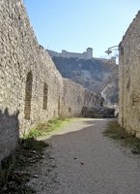
-
✴Borgo San Gregorio;
-
✴Borgo San Matteo; and
-
✴Borgo di Monterone.
The stretch of the walls illustrated here is in Via delle Murelle, between Porta Ponzianino and Porta San Gregorio.
Porta Ponzianino (13th century)
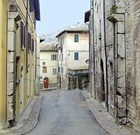
The remains illustrated here (in Via della Ponzianino, in the wall of number 55 and in that of the house opposite) seem to belong to a gate that was built at the time of the new city walls in the 13th century.
Porta San Gregorio (1945)
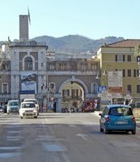
Pope Leo XII rebuilt the gate in 1825, after which it was called Porta Leonina. It was bombed in 1944 and and took on its present unlovely appearance shortly thereafter.
Porta San Matteo (1297)
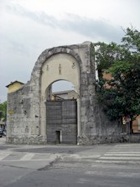
Porta Monterone (1297)
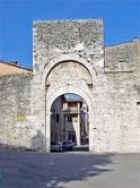
[Arms of the city?]

